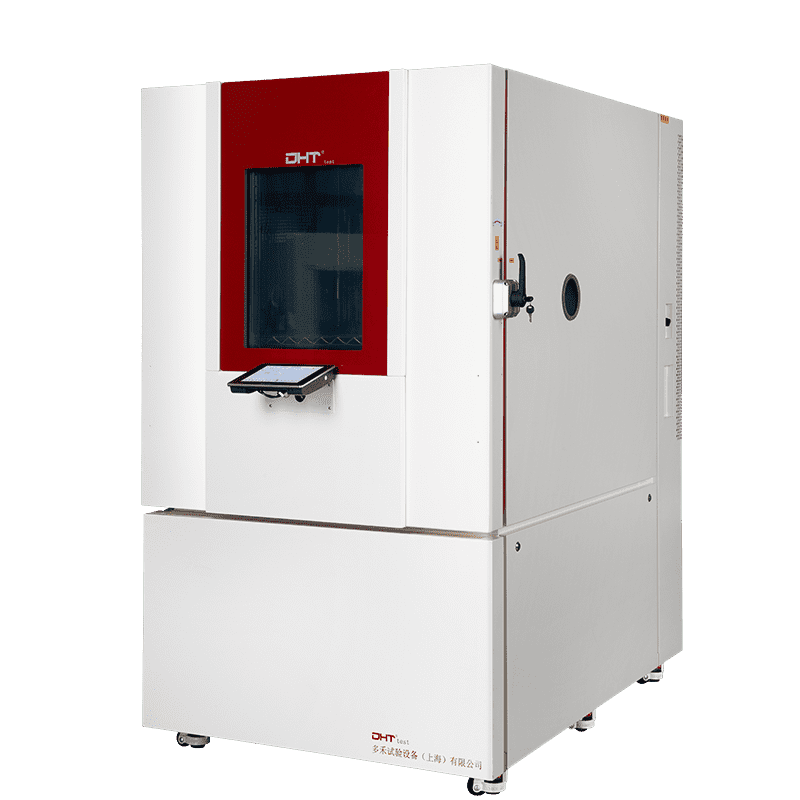Why Must Battery Testing Embrace “Extremes”?
-
In tropical zones, batteries may face long-term exposure to +60°C heat and high humidity.
-
In high-altitude or aviation settings, low pressure and low oxygen become critical concerns.
-
In frigid regions, batteries must start and operate reliably at -40°C or below.
-
In transport scenarios, batteries are vulnerable to shock, vibration, and rapid temperature changes.
-
For safety testing, batteries must endure thermal runaway simulations and extreme fault conditions.
Six Types of Extreme Environments Simulated by Battery Environmental Test Chambers
High-Temperature Aging (+60°C to +85°C)
-
Thermal aging lifespan assessment
-
High-temperature charged storage testing
-
Thermal imbalance behavior in battery packs
Ultra-Low Temperatures and Cold Start Testing (-40°C and below)
-
Low-temperature charge/discharge testing
-
Cold start performance validation
-
Safety tolerance evaluations under extreme cold
High Humidity and Condensation Stress (Humidity >90% RH)
-
Long-term high-humidity aging (e.g., 40°C / 95% RH for 72 hours)
-
Condensation formation during thermal cycling
-
Coupled heat-humidity stress scenarios
Rapid Thermal Change and Thermal Shock (≥10°C/min)
-
Rapid thermal cycling (≥10°C/min)
-
Multiple cycles between -40°C and +85°C
-
Combined thermal shock and cold shock simulation
High-Altitude and Low-Pressure Simulation (Below 60 kPa)
-
Simulated pressure during air transport
-
High-altitude environment reproduction (5,000m+)
-
Validation of cell sealing and structural integrity
Thermal Runaway and Fault Condition Testing
-
Overcharge/overdischarge followed by rest periods
-
Triggered ignition via localized heat sources
-
Short-circuit or mechanical damage response testing
Test Configuration Strategies by Application Scenario
● EV Power Battery Testing
-
Wide-range rapid thermal cycling systems
-
Large-volume walk-in test chambers for full-pack simulation
-
Interface integration with BMS/VCU systems
● Energy Storage Battery Testing
-
Long-term high-humidity capability (e.g., 95% RH for 1,000 hours)
-
Multi-point temperature and data monitoring
-
Compatibility with EMS and communication protocols
● Consumer Electronics Battery Testing
-
High-precision temperature/humidity control (±0.5°C / ±2% RH)
-
Compact, modular test cells for parallel testing
-
Support for visual analytics and batch data processing platforms
What Makes a Battery Environmental Test Chamber Truly “Professional”?
-
Control Range & Accuracy: -70°C to +150°C, 10% to 98% RH, ≥5°C/min temperature change rate
-
Safety Features: Over-temperature protection, explosion-proof doors, pressure relief systems, fire suppression
-
Intelligent Functions: Remote operation, cloud data upload, fault monitoring and alerts, automated test logging
-
Modular Expandability: Integration with UV exposure, low-pressure systems, vibration modules for multi-physics testing
Conclusion: Pushing Testing to Extremes, Building Products That Endure
FAQ
Q1: Why are extreme environmental simulations necessary for battery testing?
A1: Batteries operate in diverse and harsh conditions such as high heat, extreme cold, high humidity, low pressure, and rapid temperature changes. Extreme environmental simulations in battery test chambers help identify potential failure mechanisms, optimize thermal management, and ensure system reliability and safety throughout R&D, validation, and certification stages.
Q2: What types of extreme conditions can battery environmental test chambers simulate?
A2: Modern battery environmental chambers can simulate high-temperature aging (+60°C to +85°C), ultra-low temperatures (-40°C and below), high humidity (>90% RH), rapid thermal changes (≥10°C/min), high-altitude/low-pressure environments (below 60 kPa), and thermal runaway or fault conditions. These capabilities enable comprehensive testing across electric vehicles, energy storage, and consumer electronics applications.
Q3: What features define a professional battery environmental test chamber?
A3: A professional battery environmental test chamber offers wide control ranges (-70°C to +150°C, 10–98% RH), precise temperature and humidity regulation, rapid thermal change capabilities (≥5°C/min), safety features such as over-temperature protection and explosion-proof doors, intelligent functions like remote operation and cloud data logging, and modular expandability for multi-physics testing including UV exposure, low-pressure, and vibration modules.


